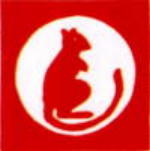The Motor Pool TMP7013 M4A3 Sherman Medium Tank - British 7th Armoured Division "The Desert Rats" (1:35 Scale)
"After [El] Alamein, we never had a defeat."
- British Prime Minister Winston Churchill
 By all accounts, the M4 Sherman medium tank was regarded as the workhorse of the US Army during World War II. In fact, virtually all of the Allied armies employed the Sherman in their armed forces, including the British, who developed an upgunned variant called the "Firefly". Eleven different US plants manufactured six basic models of the Sherman, and by June 1944 over 49,234 battle-ready vehicles had been produced. While it was no match for the German Panther or Tiger tanks, the Sherman soldiered on, using its weight in numbers to wrest control of Europe from the Wehrmacht. The M4A3 was fitted with a long-barrel M1A1 76mm gun, which replaced the shorter and less effective 75mm gun, and sported a larger, more angular turret to house the bigger gun. In addition, the slope of the M4A3's frontal armor was changed to 47-degrees to increase frontal protection and simplify the production process.
By all accounts, the M4 Sherman medium tank was regarded as the workhorse of the US Army during World War II. In fact, virtually all of the Allied armies employed the Sherman in their armed forces, including the British, who developed an upgunned variant called the "Firefly". Eleven different US plants manufactured six basic models of the Sherman, and by June 1944 over 49,234 battle-ready vehicles had been produced. While it was no match for the German Panther or Tiger tanks, the Sherman soldiered on, using its weight in numbers to wrest control of Europe from the Wehrmacht. The M4A3 was fitted with a long-barrel M1A1 76mm gun, which replaced the shorter and less effective 75mm gun, and sported a larger, more angular turret to house the bigger gun. In addition, the slope of the M4A3's frontal armor was changed to 47-degrees to increase frontal protection and simplify the production process.
Now The Motor Pool is proud to offer this stunning 1:35 scale diecast replica of a US M4A3 Sherman medium tank attached to the British 7th Armoured Division ("The Desert Rats"), which is handpainted in a desert sand camouflage scheme to reflect its involvement in the battle for Tunisia in the summer of 1943. This particular tank has been 'muddied' to give it a more weathered appearance.
Sold Out!
Dimensions:
Length: 8 inches
Width: 3 inches
Height: 3.25 inches
Historical Account: "The Desert Rats" - According to Field Marshal Lord Carver, himself a former Desert Rat, the 7th Armoured Division's name and emblem were inspired by a pet jerboa kept by a regimental signaller. Seeing the beast, the division's then commander, Major-General "Hobo" Hobart, is said to have remarked, "This little animal should become our emblem. We must learn to live as he does, the hard way, in the desert."
And, having trained its men to fight and win battles in the vast Western Desert, the division played a crucial, and decisive, role in the North African campaign. Three times - in 1940, '41 and '42 - German and Italian forces attempted to take control of the North African coast. Three times they were driven back, by the UK's Eighth Army, the heaviest fighting taking place near Tobruk in Libya.
The German commander, Lieutenant-General Erwin Rommel - the charismatic and respected 'Desert Fox' - promised his men that, if they took Tobruk, he would build a monument to commemorate the victory. If they lost, though, the Afrika Korps would bury its dead there. The German cemeteries still to be seen on the Libyan coastline bear mute testament to Rommel's failure and the Desert Rats' hard-won success.
But it was victory at El Alamein in October 1942 - which came after one of the biggest artillery barrages of the war - that sealed Rommel's fate in North Africa and brought the Desert Rats, the Eighth Army and its commander, General Bernard Montgomery, eternal fame.
Not surprisingly, the Desert Rats' war did not end there. They fought in some of the war's bloodiest battles; at Salerno, in Normandy. and crossing the Rhine into Germany. And they ended the war by marching in the victory parade at the very heart of the Third Reich, Berlin itself.


